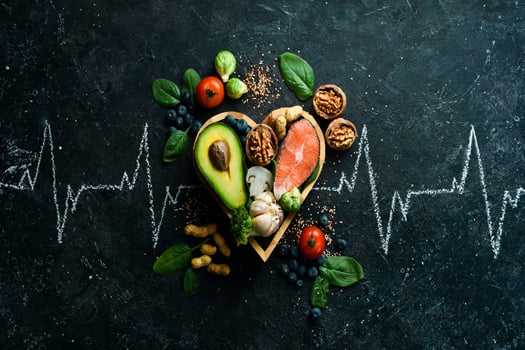
Sciatica is a common type of pain that originates in the sciatic nerve, which runs from the lower back to the legs. This pain can range from mild to severe and can be debilitating, making it difficult to perform everyday activities. Sciatica can be triggered by various factors, such as herniated discs, spinal stenosis, piriformis syndrome, pregnancy, or injury.
While there are many treatments for sciatica, such as medication, physical therapy, injections, and surgery, some people may also benefit from making dietary changes. Certain foods can reduce inflammation, which is often a cause of sciatica pain. On the other hand, some foods can worsen inflammation and aggravate sciatica symptoms. This article will discuss the foods to avoid when dealing with sciatica as well as some dietary choices that can support the healing process.
Processed Foods
Processed foods have been altered from their natural state to extend their shelf life or improve their taste. These foods are often high in sodium, sugar, and saturated fats, which can increase inflammation and worsen sciatica pain. Examples of processed foods include canned foods, frozen dinners, and snacks like chips and crackers. Avoiding these types of foods can decrease inflammation and ease sciatica pain.
Red Meat
Red meat is high in saturated fat, which can increase inflammation in the body. This inflammation can irritate the sciatic nerve, causing pain. If you are living with sciatica, it is best to avoid or limit your intake of red meat. Instead, opt for lean proteins like chicken or fish, which are low in saturated fat and reduce inflammation.
Dairy Products
Dairy products like cheese, milk, and yogurt can trigger inflammation in some people. This inflammation can exacerbate sciatica pain and make it harder to manage. If you are sensitive to dairy, you should avoid these products or opt for non-dairy alternatives like almond milk or soy-based yogurt.
Fried Foods
Fried foods such as french fries, fried chicken, and onion rings are high in saturated fats and trans fats, which can increase inflammation, irritating the sciatic nerve and worsening sciatica pain. If you are suffering from sciatica, stay away from fried foods. Instead, opt for baked or grilled options, which are lower in fat and lessen inflammation.
Sugary Foods
Sugar is one of the most inflammation-triggering foods you can eat. Sugary foods like candy, soda, and baked goods can spike blood sugar levels and prompt the release of pro-inflammatory cytokines. Sugar can also contribute to weight gain, which can put more pressure on the spine and nerves. People with sciatica should avoid sugary foods and opt for fruits instead, which are naturally sweet and can fight inflammation.
Alcohol
Alcohol is a diuretic, which means it can dehydrate the body and trigger inflammation. This inflammation can irritate the sciatic nerve and worsen sciatica pain. If you have sciatica, it is best to reduce your alcohol intake or avoid drinking altogether. Instead, choose water or herbal tea, which can reduce inflammation and promote hydration.
Foods to Eat for Sciatica
Some of the foods that can combat inflammation and support nerve health are:
- Fatty fish – Fatty fish such as salmon, tuna, mackerel, and sardines are rich in omega-3 fatty acids, which have anti-inflammatory properties. Omega-3 fatty acids can also protect the nerves from damage and increase blood flow. Aim to eat at least two servings of fatty fish per week.
- Leafy greens – Leafy greens such as spinach, kale, collard greens, and Swiss chard are packed with antioxidants, vitamins, minerals, and fiber that can protect against inflammation and oxidative stress. They also contain magnesium, which is important for nerve function and muscle relaxation. Try to include at least one serving of leafy greens per day.
- Nuts and seeds – Nuts and seeds, such as almonds, walnuts, flaxseeds, chia seeds, and hemp seeds, are another good source of omega-3 fatty acids as well as vitamin E, zinc, and selenium. These nutrients can protect the nerves from damage and inflammation. Nuts and seeds also provide healthy fats and protein that can keep you full and energized. Snack on a handful of nuts or seeds every day or add them to salads, oatmeal, or smoothies.
- Berries – Blueberries, strawberries, raspberries, and blackberries are loaded with antioxidants that can scavenge free radicals and reduce inflammation. Berries also contain vitamin C, which is essential for collagen synthesis and wound healing. Collagen is a protein that aids in maintaining the structure and integrity of the discs in the spine. Enjoy a daily cup of fresh or frozen berries or add them to yogurt, cereal, or baked goods.
Making dietary changes can be beneficial if you are managing sciatica pain. Whenever possible, opt for whole, natural foods like lean proteins, fruits, and vegetables, which can reduce inflammation and promote overall health. If you are dealing with sciatica, speak to your doctor about the best diet for your needs.
If you have had a discectomy or a less invasive microdiscectomy for a herniated disc, you may experience sciatica if the disc reherniates, which often occurs if there is a large hole in the outer ring of the disc after surgery. Fortunately, there is a new treatment available to avoid reherniation. Barricaid is a device shown to reduce the risk of reherniation by closing the hole in the disc after a discectomy, and 95 percent of Barricaid patients did not undergo a reoperation due to reherniation in a 2-year study timeframe. This treatment is done immediately following the discectomy—during the same operation—and does not require any additional incisions or time in the hospital.
To learn more about the Barricaid treatment, ask your doctor or contact us at 844-288-7474.
For full benefit/risk information, please visit: https://www.barricaid.com/instructions.


Comments